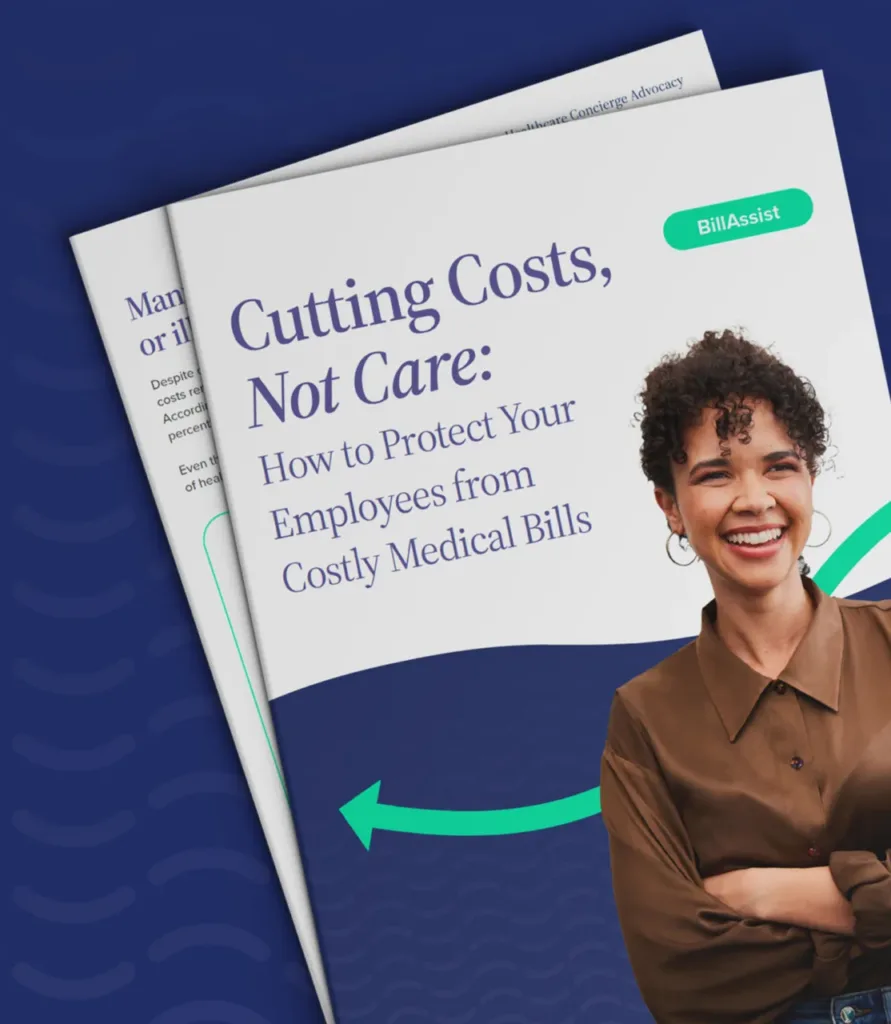It’s no secret that offering comprehensive healthcare benefits to employees is getting more challenging as costs continue to escalate. Unsustainable, continuous cost increases have employers facing a difficult choice, offer health benefits that leave employees with significant medical debt, or think outside the box. Hospital financial assistance (HFA) programs provide essential healthcare services at free or reduced costs to eligible individuals, serving as a crucial support system for those unable to afford medical care.
Understanding the nuances of hospital financial assistance can be a game-changer for employers looking to keep employees happy and healthy while effectively managing their company’s costs. That’s why Goodroot and our community of companies conducted a comprehensive survey to expand the current knowledge base surrounding employee medical debt and hospital financial assistance.
Keep reading to learn about the findings from our survey broken down into three key components that every employer needs to know.
#1: The financial burden of healthcare is continuing to rise.
The average cost of health benefits has sharply risen over the years. Currently, employers spend an average of $17,393 per employee for family coverage—marking an increase of over 47% since 2013.
This financial strain is also felt by employees, with 43% reporting current or past struggles with medical debt. Over 40% of those with private insurance say that this debt has affected their ability to afford daily costs of living, such as rent, gas and groceries.
Furthermore, a staggering 74% of individuals have avoided medical care due to cost concerns. This avoidance can lead to worsening medical issues, resulting in higher future medical expenses for both the employee and employer.
#2: Hospital financial assistance is chronically underutilized due to misconceptions on eligibility and lack of awareness.
Despite a clear need for financial relief, 82% of people are either unaware of HFA or have never applied.
A significant barrier to accessing hospital financial assistance is that many people—including those with employer-sponsored insurance—incorrectly assume that their income is too high or patients with insurance do not qualify.
In reality, the eligibility criteria are quite inclusive, with thresholds extending to 400% (even up to 600% in urban areas) of the Federal Poverty Level. This means that a family of four with a household income between $120k and $180k could potentially qualify for assistance.
In addition to confusion about income eligibility, many people overlook HFA due to the misconceptions that employee-sponsored health plan disqualifies them, the complex application processes required to access these programs, and a reluctance to accepting “charity care.” These misconceptions and hurdles underscore the need for simplified access to information and assistance.
#3: Employers have the power to make a difference to support their employees.
Employers are uniquely positioned to bridge the gap between their employees and hospital financial assistance programs. There are several strategies employers can implement surrounding this that can significantly impact their employees’ financial and physical health:
Raising awareness about hospital financial assistance
Working with an outside partner who can help seamlessly connect employees to the hospital financial assistance they’re entitled to can change the game, helping them avoid medical debt. By proactively informing and guiding them to the benefits they’re entitled to, you not only help prevent medical debt but also strengthen their trust in your company. Such initiatives enhance your employees’ perception of their benefits package, emphasizing your commitment to their health and financial security.
Simplifying access to hospital financial assistance programs
One of the most directly impactful ways employers can increase access to HFA is offering healthcare navigation services. These services offer intuitive and streamlined technology for financial assistance applications that reduce the complexity and time required to apply, making it easier for employees to access the support they need.
Moving forward
HFA programs are a crucial yet underleveraged resource that can alleviate the financial impact of healthcare costs on employees. By understanding these key points, employers can play a pivotal role in guiding their workforce towards relief and foster a healthier, more financially secure team.
The data used in this article comes from a comprehensive survey conducted by Goodroot and its affiliates to gauge medical debt prevalence among those with employer-sponsored health insurance, and the level of awareness and experiences concerning hospital financial assistance programs. This survey reached 2,000 American adults, with participants carefully chosen to reflect a diverse cross-section of the population. This selection was based on various demographic factors such as age, income, ethnicity, and insurance status, ensuring a representative and inclusive sample. For the purposes of this content, we isolated survey results to focus specifically on employees with commercial, employer-sponsored coverage.






